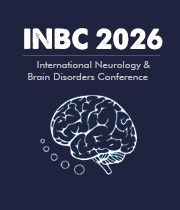Dystonic Disorder
Dystonia is a disorder that can be caused by a variety of neurological conditions and causes muscles to contract and spasm uncontrollably. Dystonic movements can cause pain as well as disrupt simple tasks and routines, such as walking, speaking, and writing. Dystonia can affect any voluntary muscle groups, including the feet, hands, arms, neck, or face. The exact cause of dystonia is not always known. In some cases, symptoms may be caused by a traumatic brain injury, vascular malformation, or stroke. In some cases, a family history of dystonia is present, and symptoms may run in families. Other causes include certain medications or environmental toxins, such as lead and mercury. The most common forms of dystonia are focal dystonia, which affects a small muscle group or a single muscle, as well as generalized dystonia, which affects multiple muscle groups throughout the body. The symptoms of dystonia can vary depending on the type of dystonia and the affected muscle group. In focal dystonias, symptoms may include twisted or contorted postures, repetitive and involuntary movements, as well as pain or cramps in the affected muscle group. In generalized dystonia, symptoms may include difficulty speaking or speaking with an irregular rhythm, difficulty walking, or inability to stand up. The diagnosis of dystonia is made using both physical and neurological exams. After a physical exam to check for signs of muscle cramping or uncontrolled movements, a doctor may order additional tests to assess how the patient's nervous system is functioning. Tests used in the diagnosis of dystonia may include imaging scans such as MRI, CT, or PET scans, electroencephalogram (EEG), and electromyography (EMG). A doctor may also order blood tests to rule out other conditions. Treatment for dystonia may include using oral medication, oral injections, surgery, or physical therapy. Medication used to treat dystonia includes drugs such as tetrabenazine, anticonvulsants, and botulinum toxin. Surgery may be needed in cases where the initial treatments do not successfully reduce the symptoms of dystonia. Physical therapy can help reduce muscle spasms and improve the patient's range of motion. Living with dystonia can be difficult, as the symptoms can be long-term and affect different activities and routines. If you or someone you know is experiencing symptoms of dystonia, it is important to seek medical help to develop a comprehensive treatment plan.

Joe Sam Robinson
Mercer University, United States
Robert B Slocum
University of Kentucky HealthCare, United States
George Diaz
Memorial Healthcare Systems, United States
Daniel Curry
Texas Children’s Hospital, United States
Zhenhuan Liu
Guangzhou University Chinese Medicine, China
Kiran Ghotra
Lake Erie College of Osteopathic Medicine, United States




Title : Atypical presentation of Juvenile myoclonic epilepsy in a 16-year-old female: A Case Report
George Diaz, Memorial Healthcare Systems, United States
Title : What we don’t know about hydrocephalus and It’s management
Daniel Curry, Texas Children’s Hospital, United States
Title : Artificial intelligence-driven DWI and FLAIR for the detection of early stroke changes: A systematic review
Shari L Guerra, The Medical City, Philippines
Title : Mapping neuroplasticity in occupational therapy: Evidence-based interventions with measurable neural outcomes
Jessica Marchant, Texas Woman's University, United States
Title : Non-pharmacologic management of orthostatic hypotension in inpatient rehabilitation: A quality improvement initiative
Laura Steakin, Rehabilitation Institute at Sinai, United States
Title : Non-pharmacologic management of orthostatic hypotension in inpatient rehabilitation: A quality improvement initiative
Mackenzie Weber, Rehabilitation Institute at Sinai, United States